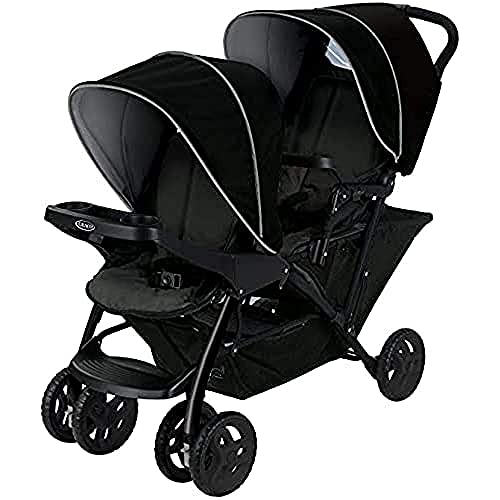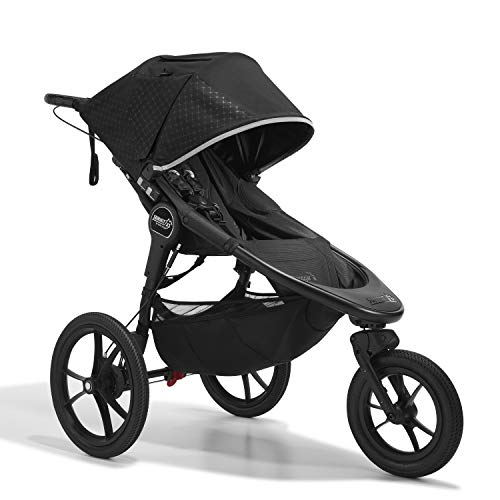7 Simple Secrets To Totally Rocking Your Baby Pram
 When Should You Buy a Baby Pram?
When Should You Buy a Baby Pram?
 The baby pram market is confusing, especially when deciding between a pushchair or a pram. Prams are specifically designed for infants that are between six and seven months and usually come with a bassinet/carrycot to ensure that babies can lie flat which is important for their spinal development and lung health.
The baby pram market is confusing, especially when deciding between a pushchair or a pram. Prams are specifically designed for infants that are between six and seven months and usually come with a bassinet/carrycot to ensure that babies can lie flat which is important for their spinal development and lung health.
What is a stroller?
The journey with your family could be enhanced with the right baby stroller. A pram typically has a carrycot that allows newborns to lie flat, which is perfect for their growth and development. This position also helps ensure the development of healthy lungs. Prams can be a great option for newborns and infants up to six months old since they are designed to keep them comfortable, safe and secure.
A stroller, often referred to as a pushchair, is generally used for slightly older babies. Babies can sit upright in a stroller once they’re strong enough to support their heads and hold themselves. Strollers are also equipped with a seat, which includes the seat belt, a harness and crotch belts to keep children in a secure position.
Both types of strollers are great options for parents who want to take part in outdoor activities such as jogging or hiking or shopping. You’ll need to weigh the pros and cons of each stroller to determine which is best for your baby and you.
Baby prams are a great instrument to help you connect with your child on outdoor adventures. They promote a deeper connection, and they can learn more about the environment. These strollers can add a touch glamour and elegance to any journey and provide comfort for both the child and the parent. It is crucial to take the time to look over the features of strollers and prams before settling on the one that’s best for your child. You can be certain that you’re getting the most from your investment, and will enjoy a comfortable, happy and stress-free ride.
Who is the person who uses a stroller?
Parents are increasingly having a hectic schedule and require a convenient way to transport their child. This has led to the increase in demand for wheeled baby carriers called buggys, prams, strollers and so on. They come in different sizes and styles to accommodate infants, toddlers and children up to three years old.
Most prams are made for infants and newborns. The majority of them have a carrycot, which allows the baby to lie on its back which is important for lung and spinal development. They may also come with an insulated hood and soft lining to protect them from the sun. Some prams have cribs that can be removed and utilized as a Moses basket. Some models also have an adjustable seat that can be changed between the parent-facing (known as world facing) or forward-facing positions.
Prams can be more expensive than strollers, but they have a number advantages. These include soft suspensions and a better ability to maneuver on rough terrain. Some older models even have the ability to fold flat for easy storage and mobility.
Many famous brands of prams have been created throughout the years. Some of the most famous brands include Millsons Marmet Osnath London Baby Coach LBC.
Today, some pram makers have expanded their range to include car seats and other baby products. One of these brands is Mamas & Papas who have been making pushchairs and prams in Huddersfield, England for 30 years. They are renowned for their fashionable designs, and high-quality construction. Celebrities like Natalie Portman or Gwen Stefani are among their clients. In addition to their renowned range of prams, they also manufacture baby changing mats and bottles. A range of travel toys is also available to help keep the baby entertained during long journeys or while visiting public places like theme parks.
How does a stroller function?
Newborn babies need to lay flat in their pram, since it’s the most optimal position for their healthy breathing as well as the development of their spine and lungs. Once they’re able to sit straight, they can shift into the stroller that is suitable for their age.
Prams are designed to be used and pushed by parents, with a strong, deep carrycot for your baby to sleep in. With the addition of infant car seat and a car seat, they can be transformed into a travel system that is suitable for newborns and young children. Prams are lighter and more maneuverable than strollers. They can be used on any terrain.
The front of a pram could be fitted with a hood that can be adjusted to shield your child from sunlight, wind or rain. Many come with large bottom baskets that can be used to store diaper bags, grocery items and other items. They can be folded up into a compact form which makes it easy to put in the car and remove from it. Many also feature an earplug to keep your baby warm in the cold winter months.
When you’re out shopping for your baby, the rows and rows upon rows of strollers, pushchairs, and prams can seem overwhelming. Knowing the differences between these kinds of products will assist you in selecting the right product for both your baby and your family.
Why should I buy a pram?
It is important to make the right choice when purchasing a pram for a baby. It is crucial for their health, wellbeing and development. Carrying them around in your arms becomes exhausting and tiring as they get older. A reliable transport system will allow you to enjoy family outings, trips and shopping without causing your baby or yourself any discomfort.
When looking for the pram or pushchair you want, it can be difficult to determine which one is best for you and for your child. This is due to the fact that a lot of retailers use different terms to describe similar products – such as pram, stroller and buggy.
A pram is a crib on wheels that is designed specifically for newborns. They allow the baby to lay flat, which is great for respiratory and spinal development. Many prams also come with an umbrella to shield the baby from sun and rain. A pram is usually heavier and heavier than a stroller, however it is important to think about your habits and how often you will be using the product prior to making any purchase decisions.
Strollers are light models that are ideal for walking in the day and are designed for use by babies who can sit. They are perfect for shorter distances or straight lines. Some strollers are convertible into a car seat or pram, making them versatile and giving parents a range of transportation options. Bababing Raffi for instance, can be used as a car seat and stroller. This is perfect for families that are growing. This helps keep costs down because you only need to buy one item instead of four items.
At what point should I stop using a stroller with my baby?
This question is difficult to answer as each child develops at a different rate. However, there are general guidelines to help you decide when your child is ready to quit using a pram.
One thing to take into consideration is when your child begins sitting up without assistance. This typically occurs about six months old but it may differ between children. When your baby is able to sit up unaided, it may be the time to transition your baby from the pram to the pushchair.
Your baby’s curiosity and level of independence are other important factors to consider. If your child shows more interest in the world around them, for example, staring at the passing objects or attempting to sit and look at the side of the pram, then it might be time to move the stroller for an infant pushchair.
In addition, the weight of your baby is an important aspect to take into consideration. The majority of prams have a maximum and minimum weight limit, which is governed by safety regulations. Once your baby reaches the maximum or minimum weight, it could be the right time to switch from the pram to a pushchair.
While transferring your baby from the pram to the pushchair can be an exciting milestone however, there are a few pitfalls. During this time, your child might protest and scream because they’re losing their secure environment. However, this is normal and their behaviour is an indication that they are growing up and becoming independent. Encourage them to walk on their own when they are ready. With perseverance and patience you will soon be able to see your baby leaving from the pram.